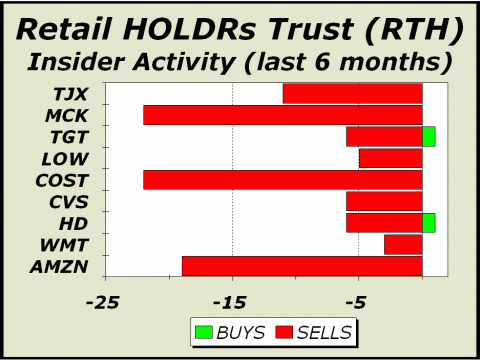Rationales & Targets
Our greatest fear is a replay of the two prior bear markets which both erased 50% of all stock wealth. Given Fed policy has been expressly designed to create and foster wealth, another collapse along the lines of the two prior burst bubbles would act as concrete evidence that the Fed has been deluded all along and as a result, we will all pay the price. A replay of either of the two prior bear markets would likely mean permanent damage to the U.S. economy.
The Dow Industrial’s 20-year annualized rate of gain is 7.1%, fully 2.1% higher than the historical norm. Dating back close to a century, 20-year annualized returns have been under zero almost 50% of the time. At the bottom in March 2009, the 20-year annualized average rate of gain only got as low as 5.57%. We are overdue for a journey back to the historical norm and we are certain it will happen. If the Dow simply moves sideways, the return to the historical norm will be in August 2017, and this is a best case scenario. More likely the average will fall well below 5% as the era of paper assets falls prey to the excesses of three manias.
The rising wedge in the S&P 500 is troublesome. Although we are looking at a decline below SPX 2100 as our first clue a correction/bear market is in the cards, the support line for the trend measures down to 2080. If that level breaks, we expect a downside acceleration. Unfortunately, $550 in margin debt has the potential to catalyze a crash.
The Jobs Picture
The “seasonally adjusted” unemployment rate is down to 5.4% as of April and the U-6 tally is down to 10.8%. Why then are we so depressed about the jobs picture? We’ll point to the following as evidence that all is not as it appears; the U.S. Government Accountability Office says more than two-fifths of the workforce is now made up of contingent workers—folks who don’t have what we traditionally consider secure jobs (see http://onforb.es/1FcgY04). Not good enough? Try this one on for size; 40% of the unemployed are so discouraged thay have quit looking for jobs (see http://cnb.cx/1c5uFpl). This is not a healthy economy; it is an economy sliding towards recession. The recent first quarter report was no fluke.
Retail Rebound? Not Likely.
[A free three issue trial is available upon request]
How things could possibly get better from here is a mystery. HSBC fears a worldwide recession “with no lifeboats left” (see http://bit.ly/1GxTHu6). Goldman Sachs is warning that “the world is drowning in debt” (see http://bit.ly/1Kj4mb5). Jeff Greenblatt, writing for Futures magazine believes “The day of reckoning is coming” (see http://bit.ly/1LNT0fI). On Seeking Alpha, Dave Kranzler of Investment Research Dynamics, says “The U.S. Economy Appears To Be In Trouble” (see http://bit.ly/1BspExZ). No way we’d argue with any of these articles since these are precisely the points we have attempted to make for so many months.
Indeed, the latter article cited above has an interesting chart of the trend in retail sales, which we believe is clearly borne out in the attitude of highly placed executives of the top nine retail companies comprising 58.5% of the RTH Index. The two buys over the last six months total 10,350 shares versus 50 sales of 2,742,620 shares, a sell/buy ratio of 265 shares sold for every share bought. The stats stand as sixth worst of the 18 times we have taken this particular pulse since 2006. Nothing too revealing other than the obvious; insiders are clearly not displaying any confidence in a rebound for retail sales.

For more information, please contact us:
Alan M. Newman, Editor, Crosscurrents
www.cross-currents.net
